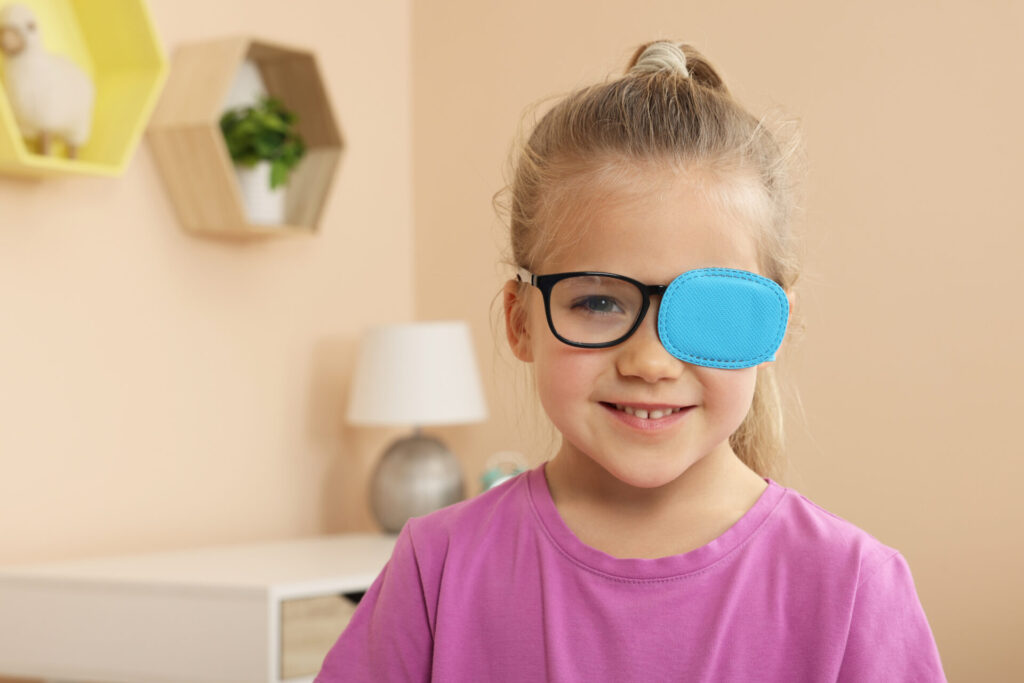Vision Therapy for Visual Processing Disorders
If the brain isn’t equipped with the necessary abilities to visually process information, then it can’t make sense of the world that we see. A child, for example, might have perfect 20/20 vision, but still struggle with recalling pictures, symbols, or even distances.
Children’s ability to properly learn, whether in the classroom or out in the world, along with interacting and socializing with their peers can be hugely impacted by any problems they may have with visual processing.
For those children who haven’t developed good visual processing skills, they will have problems relating to their vision – this might include problems with eye teaming, focusing, and eye movement. Fortunately, there are a variety of therapies which exist to help strengthen these skills.
Defining Visual Processing Disorder
At its simplest definition, visual processing disorder means that the brain isn’t able to properly process the information that the eyes take in. What it doesn’t mean is that your child doesn’t have good eyesight. The problem lies in how the brain lacks the ability to make sense of the visual information sent to it by the eyes.
Symptoms and Signs of Visual Processing Disorder
There are specific symptoms and signs to watch out for that can indicate that a child is struggling with a visual processing disorder. These include:
- A difficulty distinguishing between shapes, letters, or objects – particularly those that are similar.
- Difficulty identifying objects which are partially obscured.
- Difficulty judging the distance between objects.
- Difficulty with distinguishing a figure or object from its background.
- Frequently reversing letters, numbers, or words.
- Poor or illegible handwriting.
- Difficulty with remembering what they have viewed – whether images or words.
- A tendency to reread lines over and over again, or skipping lines while reading.
- Difficulty with writing between or on the line or with copying from a book.
- Bumping into objects while walking.
- Difficulties with organization.
- Poor retention of any visual classroom material.

Frequent Areas of Difficulty
Visual Memory
Visual memory is what allows for the immediate remembrance of what letters, shapes, numbers, or objects look like. A common sign of visual memory impairment is when a child has difficulty recalling a word from one page to another, or is experiencing difficulty with copying information from a visual source – such as from a white board into their notes.
For children who struggle with comprehension skills, these are often linked to problems with visual memory.
Visual Sequential Memory
When it comes to remembering a list of items in correct order, this is known as visual sequential memory. It’s essential for both reading and spelling. For children who struggle with remembering the order of letters or shapes that appear in a series – e.g., struggling with spelling – then it’s likely that they have problems with visual sequential memory.
Visual Closure
What visual closure refers to is the ability to “visualize” the complete whole of an object or idea when given incomplete information. This is a skill that is crucial for a child’s ability to read fluently and particularly with reading comprehension. What happens when a child has issues with visual closure is that they will only be able to recognize a word by sight.
Visual Discrimination
When it comes to reading, writing, math, and even social interactions, visual discrimination is a key skill. Visual discrimination is what allows children to detect the differences in visual images. For children who struggle with recognizing slight differences, they might become confused by people with similar appearances, or words and letters that are similar – such as ‘saw’ and ‘was’.
Visual Form Constancy
What visual form constancy refers to is the ability to both mentally turn or rotate objects or to resize them mentally in order to match an image. This allows for children to recognize the shapes of words and letters, no matter how they might be oriented.
Visual Figure Ground
For children who struggle with visual figure ground, the most obvious sign is that they become overwhelmed when a page is full of words. They struggle with distinguishing an object, or word, from the background. Visual figure ground is crucial when it comes to developing good reading skills.
Visual Motor Integration
Visual motor skills involve using visual information to guide motor movements. These skills help guide a pencil while writing, and are used to catch a ball. Children with poor visual motor skills often have messy writing, poor spacing between words and have difficulty staying in the lines or margins. They may also have reduced coordination, appear clumsy and bump into things. Children with visual motor skills often have difficulty with sports and any activity that requires good balance or hand eye coordination.
Visual spatial
Children with visual spatial difficulties have a hard time understanding the spatial orientation of their own body, and how it interacts with objects in space. Children with visual spatial difficulties often have poor laterality and directionality. Laterality difficulties can result in difficulty for a child to identify their right vs left hand. Poor directionality can result in difficulty judging time and direction, poor spacing of words, and difficulty understanding how objects are positioned in space in reference to other objects.
How Can Vision Therapy Help?
Vision therapy programs are designed to work on and improve the following: visual-motor integration, visual memory, and processing speed. These therapies are designed to help work on a child’s visual processing skills, which will help them excel – both in the classroom and beyond.
If you suspect that your child might be struggling with a visual processing disorder, vision therapy could be the solution you’re looking for. Please schedule an appointment with us at Vision By Design today. You can get the answers and help you’re looking for.
